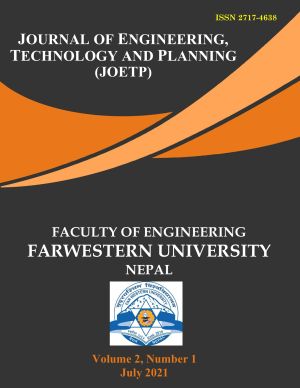Effect of Air-entrained Agent for the Mortar of Roller Compacted Concrete
DOI:
https://doi.org/10.3126/joetp.v2i1.39215Keywords:
Air content, Air-entrained agent, Compressive strength, Hardened density, Mortar, Roller compacted concrete (RCC)Abstract
Roller compacted concrete (RCC) is the zero slump concrete produced from the same materials used in conventional concrete. The mortar used in RCC plays a significant role for the workability, strength and durability of the concrete. The air content in the mortar is the key factor for durability, especially to resist the freezing and thawing action. The main target is to produce the microscopic air cells inside the mortar using air-entrained agent and minimize the entrapped air as little as possible. Air content may range from 4~7% depending upon the type of concrete. The effect of the content of AE 303A type air-entrained agent was studied for the fresh and hardened properties of the RCC mortar. The result showed that it has an almost negligible effect on the workability of mortar, but highly effective for the density and compressive strength of hardened mortar. The use of 0.02% (by weight of cement) increased the air content about 4.5 times of the base mortar (without the use of the agent), from 2% to 9.1%. However, the density was decreased by about 10 % (from 2.18 gm/cm3 to 1.96 gm/cm3) and the 28 days compressive strength by about 49% (from 21.90 MPa to 14.73 MPa). The model, developed for the mortar of the dam concrete, has also been well satisfied with the experimental results for the case of RCC mortar.
Downloads
Downloads
Published
How to Cite
Issue
Section
License
Copyright © Faculty of Engineering, Far Western University

